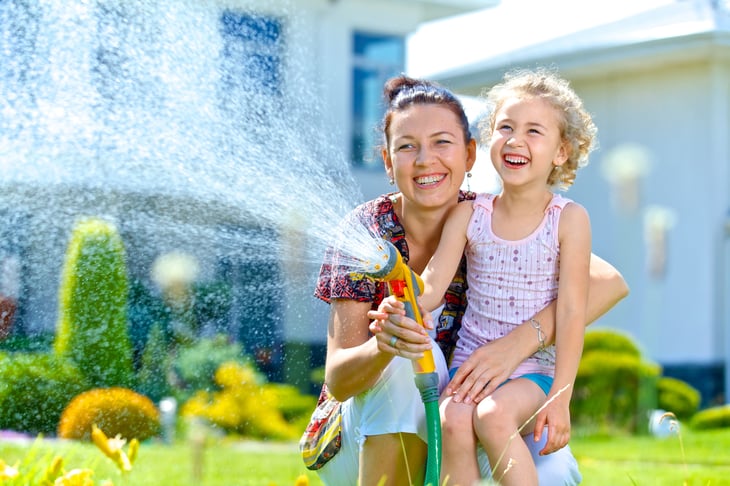
Editor's Note: This story originally appeared on LawnStarter.
Eco-friendly grass alternatives are as beautiful as turf and make for sustainable lawns that help the environment instead of harming it. With fewer toxic chemicals and less mowing, eco-friendly grass alternatives support a healthier ecosystem and safer yards for kids to play in.
This article covers the best grass alternatives that can turn your lawn green. We’re discussing clover, no-mow grasses, herbs, meadows, rock gardens, and more, with details about drought and traffic tolerance, maintenance, costs, and benefits.
What Are Eco-Friendly Grass Alternatives
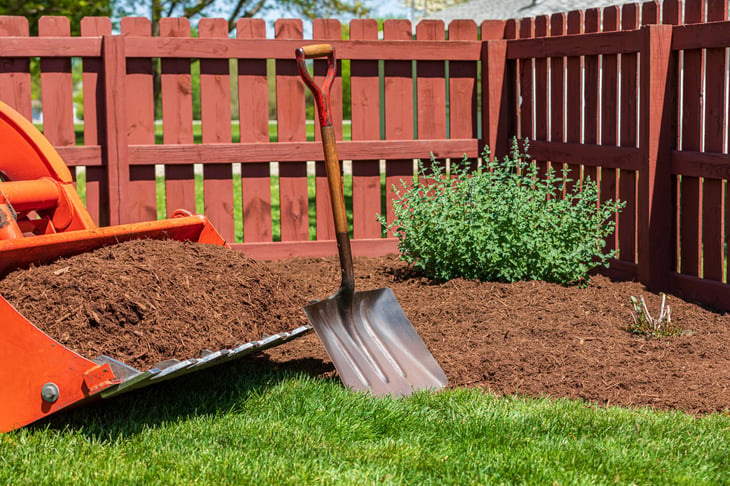
Eco-friendly grass alternatives are sustainable landscaping options that minimize the use of toxic lawn chemicals, conserve water, and reduce greenhouse gas emissions. They range from mulch, moss, and groundcovers to wildflower meadows and rain gardens and come with plenty of ecological benefits:
- Prevent air pollution: Eco-green grass alternatives greatly reduce mower use and air pollutants generated by gasoline-powered mowers (carbon monoxide, volatile organic compounds, and nitrogen oxides).
- Support biodiversity: Wildflower meadows, herb gardens, and clover lawns create thriving ecosystems. They attract pollinators, providing shelter and food to bees and butterflies.
- Improve soil health and add nutrients: Some alternatives, like clover, act as natural fertilizers. Clover captures nitrogen from the air and enriches the soil.
- Water conservation: Native grasses, groundcovers, and wildflowers are water-savvy options and need much less water than traditional turf lawns.
- Reduce chemical usage (fertilizers, herbicides, pesticides): Many eco-friendly turf substitutes thrive without fertilizers and don’t require pesticide or herbicide applications.
Overall, eco-green lawn alternatives support a healthy ecosystem and require fewer resources to thrive and look amazing. Their resilience and self-reliance translate into fewer chemicals added to the soil with the risk of leaching into the watersheds and a cleaner aquatic ecosystem.
Let’s get into some examples.
1. Moss
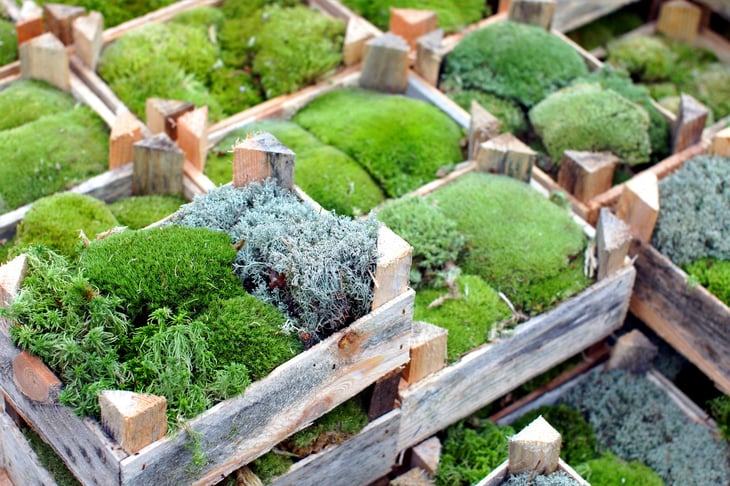
Moss is a tiny flowerless plant that spreads into a deep green, velvety carpet and has important environmental benefits. It improves disturbed ecosystems by feeding the soil with minerals and organic matter and supporting the microbiome.
Moss yards don’t need mowing or fertilization and use much less water than a traditional lawn. Free of chemical treatments, moss makes for a safer lawn and an insect-rich habitat. Fireflies are especially drawn to it, and birds use it for nesting.
To grow a healthy moss lawn, choose a native moss variety that fits your climate. Common moss types are:
- Pincushion moss (Leucobryum glaucum)
- Mood moss (Dicranum scoparium)
- Haircap moss (Polytrichum commune)
- Sheet moss (Hypnum imponens)
- Fern moss (Thuidium delecatulum)
Main characteristics of moss lawns:
- Resilience: Moss is drought-tolerant – it goes dormant during dry spells and recovers when water is available. It is also cold-resistant and stays green during winter.
- Maintenance: Mist water on it periodically to keep the soil moist. Keep the moss clean by gently removing fallen leaves.
- Foot traffic tolerance: Low. It can withstand light foot traffic.
Where to plant moss? Moss can grow on almost any substrate (soil, wood, ceramic, stone). It prefers acidic soil and partial shade, and needs some moisture to thrive.
2. Clover
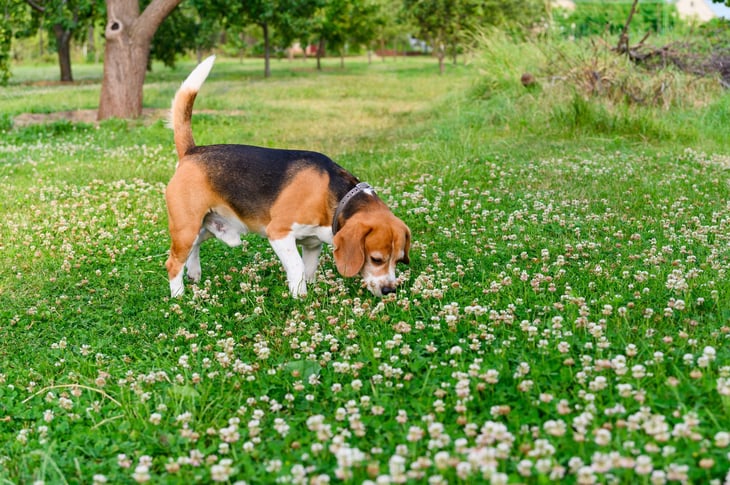
Affordable and easy to grow, a clover lawn is one of the best eco-friendly turf alternatives. It develops a dense, low-growing carpet, needs little water, and looks great without mowing.
A self-fertilizing plant, clover captures nitrogen from the air and enriches the soil. Clover’s small red, pink, or white flowers are also a magnet for honey bees, butterflies, bumblebees, and ladybirds, promoting biodiversity and a healthy ecosystem.
The most popular clover varieties you can plant on your lawn are:
- White Dutch clover (Trifolium repens)
- Micro clover (Trifolium repens L.)
- Red clover (Trifolium pratense)
- Strawberry clover (Trifolium fragiferum)
Main characteristics of clover lawns:
- Resilience: Drought-tolerant with good cold resistance (a perennial groundcover in warmer climates). It has low disease vulnerability and crowds out weeds.
- Maintenance: It needs mowing a few times a year if you want a neat, short lawn.
- Foot traffic tolerance: Moderate. Mix with turfgrass in heavy-traffic areas.
Where to plant clover? Clover loves well-drained soils. It’s a cool-season plant that thrives in temperate regions but can grow well in a variety of climates. It grows well in full sun but also tolerates shady areas.
3. Groundcovers
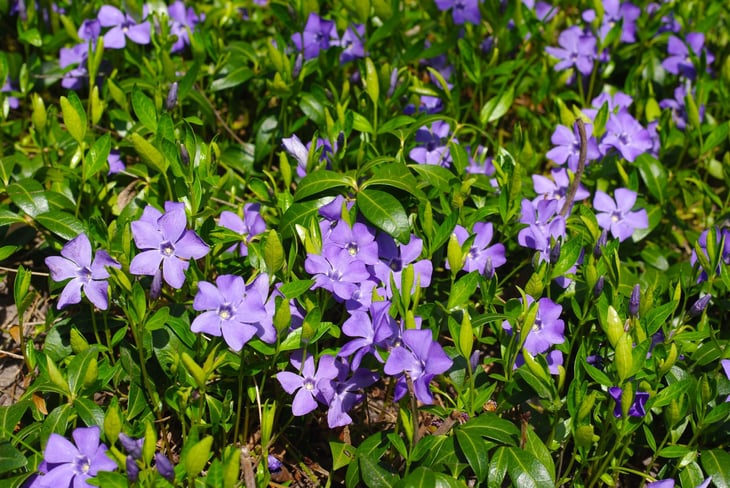
Groundcover plants are an excellent eco-friendly choice for replacing traditional grass lawns. Sprawling close to the soil, they rarely need mowing and thrive with little to no fertilizers. Groundcovers protect against erosion from stormwater runoff, improve soil quality, and promote biodiversity.
There are lots of eco-friendly groundcovers to choose from besides the popular clover and moss. Here are some top choices:
- Carpet sedum or Stonecrop (Sedum lineare)
- Creeping thyme (Thymus serpyllum)
- Corsican mint (Mentha requienii)
- Creeping phlox (Phlox subulata)
- Periwinkle (Catharanthus roseus)
- Creeping Jenny (Lysimachia nummularia)
- Sweet woodruff (Galium odoratum)
Look for species native to your area. They are the easiest to grow and best support the local biodiversity.
Main characteristics of groundcover lawns:
- Resilience: Moderate to high drought resistance. Direct sun exposure tolerance depends on the type of groundcover.
- Maintenance: Prune once a year to promote new growth. Water until established.
- Foot traffic tolerance: Low to moderate. Most groundcovers tolerate some foot traffic.
Where to plant groundcovers? Depending on budget, soil, and sun exposure, you can cover the entire lawn or add them to walkways, borders, or flower beds.
4. Ornamental Grasses and Sedges
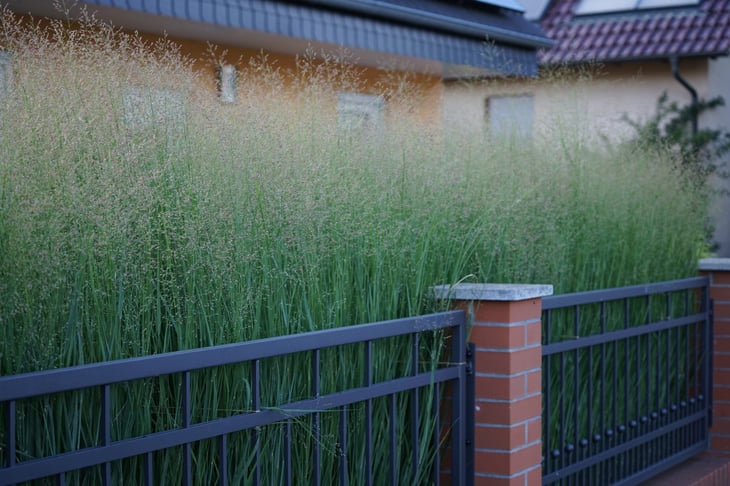
Ornamental grasses and sedges are precious shelter and food sources for songbirds and pollinators. These striking turf alternatives provide three-season interest in landscapes and adapt to a variety of soil types and climates.
Most ornamental grasses don’t require mowing, thus reducing the use of gas-powered lawnmowers and greenhouse gas emissions.
Drought-tolerant ornamental grasses and sedges you can use to replace turf in your yard include:
- Blue fescue (Festuca glauca)
- Switchgrass (Panicum virgatum)
- Little bluestem (Schizachyrium scoparium)
- Pennsylvania sedge (Carex pensylvanica)
- Blue oat grass (Helictotrichon sempervirens)
- Plantain-leaf sedge (Carex plantaginea)
Main characteristics of ornamental grasses and sedges:
- Resilience: Many native species are drought tolerant and grow best in hot, dry areas. Some love moisture and thrive along streams, ponds, or in rain gardens.
- Maintenance: Cut the grass back and divide large clumps once a year.
- Foot traffic tolerance: Low to moderate. Plant in light to no-traffic areas.
Where to plant ornamental grasses? Designers use their textured look to enhance garden borders and create colorful flower beds and privacy screens. Ornamental grasses also shine as accent plants among low-growing groundcovers.
5. No-Mow and Low-Mow Grasses
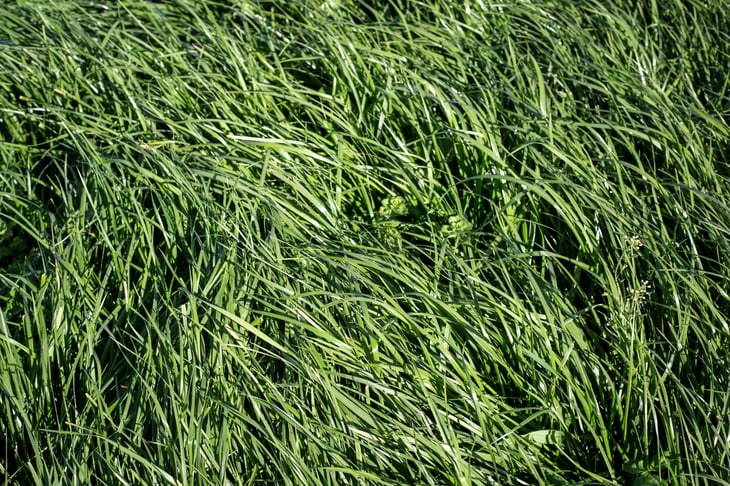
No-mow and low-mow grasses are the best eco-friendly landscaping choices for homeowners looking to keep a turf-like look for their yard. They require little to no mowing, are drought tolerant, and thrive with minimal fertilizers and pesticides.
Popular types of no-mow and low-mow grasses:
- Buffalo grass (Bouteloua dactyloides)
- Hard fescue (Festuca trachyphylla)
- Centipede (Eremochloa ophiuroides)
- No-mow Zoysia (Zoysia tenuifolia)
The main characteristics of no-mow and low-mow grasses:
- Resilience: Moderate to high drought tolerance.
- Maintenance: Low-fertilizer needs – about 1 to 2 pounds of nitrogen per year. Generally, no mowing is required. Trim a few times a year to keep a short lawn.
- Foot traffic tolerance: Low to moderate, except for no-mow Zoysia, which can handle more intense traffic.
Where to plant no-mow and low-mow grasses? No-mow and low-mow grasses are the best to mimic traditional lawns. Plant them all over the yard, on flower beds, and in any corner that needs a turf-like look with less pollution.
Buffalograss, centipede, and no-mow Zoysia are warm-season grasses fitted for the South up to the transition zone. Hard fescue is a cool-season hardy best planted up North.
6. Wildflower Meadows
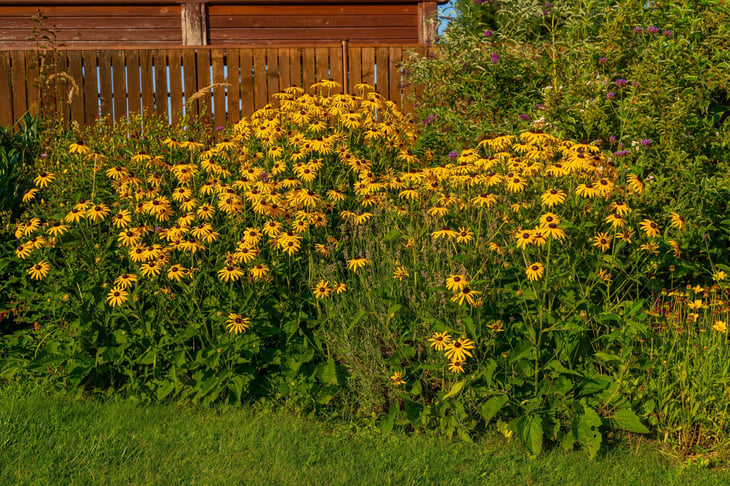
Wildflower meadows are grasslands with lots of colorful wildflowers. They form a diverse ecosystem, providing food and shelter for beneficial soil organisms, insects, and birds. Once established, wildflower meadows need no extra water, pesticides, or fertilizers.
Some colorful, vibrant flowers you can plant are:
- Black-eyed Susan (Rudbeckia hirta)
- Common madia or Tarweed (Madia elegans)
- Purple coneflower (Echinacea purpurea)
- Goldenrod (Solidago spp.)
- Milkweed (Asclepias syriaca)
- Yarrow (Achillea millefolium)
- Golden Alexander (Zizia aurea)
For a resilient, self-sustained meadow, choose species native to your area and climate. Mix with native grasses to keep weeds under control.
Main characteristics of wildflower meadows:
- Resilience: Thrive in poor soil conditions and are drought tolerant.
- Maintenance: Prune a wildflower meadow two to three times yearly to promote healthy growth and flowering.
- Foot traffic tolerance: Low tolerance to foot traffic. Install walkways for traffic.
Where to grow a wildflower meadow? The best location is an open space with well-drained soil and lots of sunlight.
7. Herbs
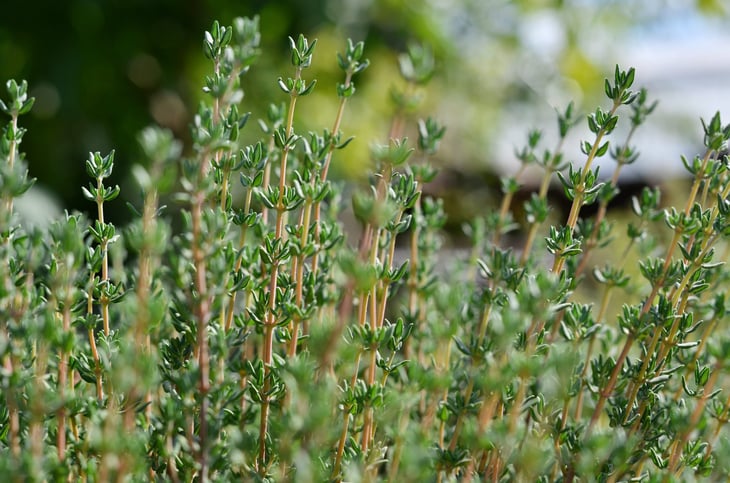
You can always turn your turf lawn into an edible garden by planting fragrant, easy-to-grow herbs. Herbs attract bees and have medicinal properties that keep insects and animals healthy. Aromatic herbs are also good for cooking and making delicious herbal teas.
Most herbs deter mosquitos, flies, and other nasty pests, reducing the need to use pesticides on your property.
The best herbs to replace a turf lawn are:
- Thyme
- Mint
- Oregano
- Chamomile
- Lavender
- Sage
- Rosemary
Main characteristics of herbs as turf replacement:
- Maintenance: Require occasional watering. Prune periodically to promote thicker growth.
- Resilience: Drought-resistant. Rosemary and thyme are hardy to zone 5 and stay evergreen in mild climates.
- Foot traffic tolerance: Herbs tolerate moderate foot traffic and work better on a lawn with walkways.
Where grow herbs? A herb garden looks amazing under your kitchen window and in every corner of your yard that receives enough sunlight. Herbs grow best in well-drained soil with full sun exposure.
8. Rock Gardens
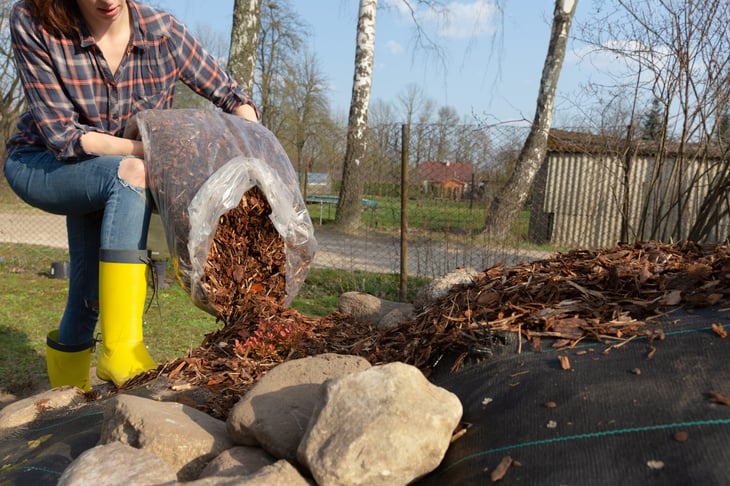
Outlined by stones and gravel, rock gardens need no mowing, watering, or chemical treatments. They protect the soil from runoff, keep moisture in the ground, and suppress weeds. Add a few cacti and xeric flowers for color and wildlife, and you get a striking, eco-friendly design to replace the high-maintenance turf.
To create a rock garden that supports wildlife, combine:
- Wildflowers: hummingbird mint, hyssop, alyssum
- Succulents: stonecrop, hens-and-chicks, ice plant
- Cacti: prickly pear, star cactus, hedgehog cactus
- Shrubs: English lavender
- Xeric groundcovers: creeping thyme, creeping phlox, rock cress
Main characteristics of rock gardens:
- Resilience: Rock gardens typically include drought-resistant plants.
- Maintenance: Remove dead leaves. Rake the gravel periodically to keep it neat. Remove weeds.
- Foot traffic tolerance: Gravel and stone-covered areas can support heavy foot traffic. Plants in rock gardens are not typically meant for stepping on.
Where to install a rock garden: It’s a form of xeriscaping design meant to reduce water consumption. Install it in a dry, sunny place in your garden where grass and other plants struggle with heat and drought.
9. Rain Gardens
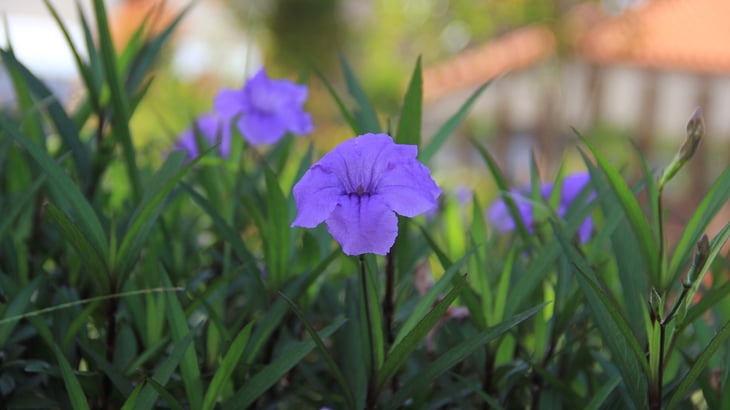
Rain gardens are built in low spots to intercept stormwater runoff from roofs, downspouts, walkways, and lawns. They absorb and filter excess water, preventing lawn pollutants like nitrogen and phosphorus from reaching storm drains.
Many rain garden plants bloom gorgeous flowers that attract pollinators and add unique beauty to your landscape.
Some of the best species to grow in a rain garden are:
- Witch hazel (Hamamelis virginiana)
- Wild petunia (Ruellia humilis)
- Sweet pepperbush (Clethra alnifolia)
- Marsh marigold (Caltha palustris)
- New England aster (Symphyotrichum novae-angliae)
- Blue flag iris (Iris versicolor)
- Switchgrass (Panicum virgatum)
- Purple coneflower (Echinacea purpurea)
- Red twig dogwood
Main characteristics of rock gardens:
- Resilience: Rain gardens house drought-resistant plants that also can deal with periodic flooding.
- Maintenance: A rain garden doesn’t need fertilizers since it absorbs the excess in the yard. Prune, weed, and clean up periodically.
- Foot traffic tolerance: Low. Avoid foot traffic in rain gardens – it damages plants and compacts soil, hindering their main function of water absorption and filtration.
Where to install your rain garden: Look for a depressed area in your yard that can capture water from your roof or a sloped area in your lawn.
10. Mulch
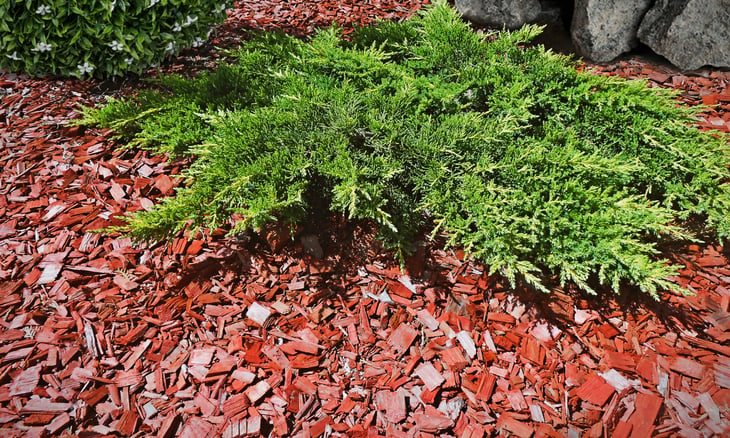
Living plants are not the only eco-friendly lawn alternatives. You also can replace large areas of turf with mulch. Choose the organic type; it benefits the soil and environment more than inorganic mulch. Organic mulch helps the environment by:
- Protecting the ground from runoff and erosion.
- Moderating soil temperature and preventing water evaporation.
- Limiting soil compaction and improving drainage.
- Stopping weeds from growing and reducing the use of toxic herbicides.
- Enriching the soil with nutrients – it works like a long-term natural fertilizer.
- Supporting the microbiome.
When replacing turf with mulch, you’ll need something that looks good and neat, such as:
- Wood chips
- Tree bark
- Pine needles
- Straw
Main characteristics of mulch as turf replacement:
- Resilience: Wood chips, tree bark and pine needle mulch decompose slower and last 2 to 5 years until the cover has to be completely redone. Straw mulch has a lifespan of 3 to 6 months.
- Maintenance: Needs periodical replacement since it decomposes. Some weeding is also necessary.
- Foot traffic tolerance: High. Suitable for walkways and high-traffic areas.
Where to place mulch? The best places are flower beds, under trees, around shrubs, on walkways, around patios, and other garden hardscapes. Organic mulch is an excellent eco-green option in any corner where plants are hard to install and care for.
11. Hardscapes
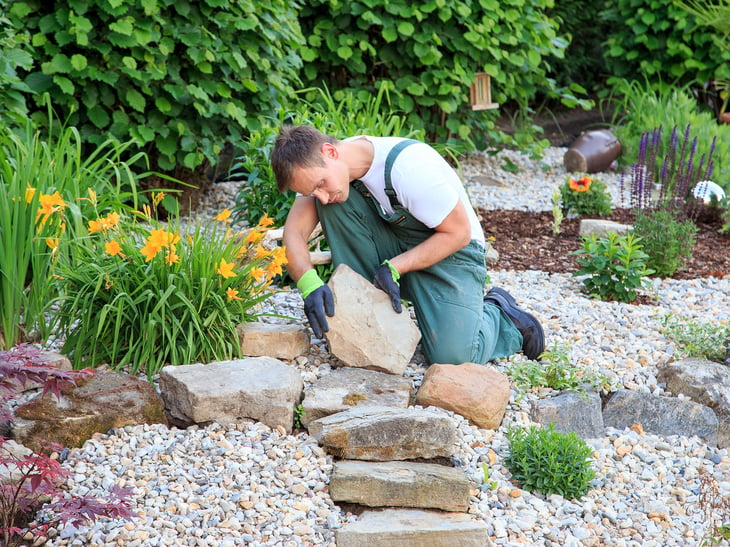
Installing hardscapes like walkways, decks, and patios protects plants from foot traffic, reduces mower use, saves water, and limits chemical applications. But not all hardscapes are eco-friendly options.
Some constructions actually do more harm than good by sealing the ground from the environment, increasing runoff and ground temperature, and depriving the soil organisms of oxygen.
The best eco-friendly hardscape materials include:
- Sand
- Stone
- Pea gravel
- Crushed shells
- Wood chips
- Bamboo
- Untreated wood
Avoid building compact surfaces that seal the soil and leave space between pavers, bricks, or stones for the earth to breathe and rainwater to percolate. You also can use permeable pavement such as pervious concrete or interlocking pavers.
Main characteristics of hardscapes in an eco-friendly lawn:
- Resilience: Good quality clay and stone pavers can last up to 50 years. Bamboo decking has a lifespan of up to 25 years, while untreated wood patios last 10 to 30 years.
- Maintenance: Periodically cut the weeds.
- Foot traffic tolerance: Excellent. They’re made for walking and protect the plants (moss, no-mow grasses, or wildflowers) around them from traffic damage.
Where to replace turf with hardscapes: Install durable walkways in your front yard to protect the plants from foot traffic. Build a deck or a patio in the backyard.
Why Replace Traditional Turf Lawns
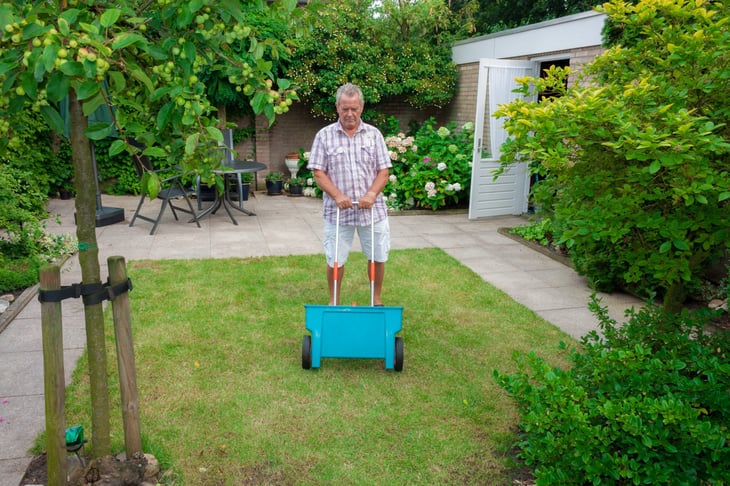
Traditional turf lawns barely support wildlife and add significantly to air and water pollution. Many lawn owners rely on overwatering and heavy chemical treatments to keep their turf lush and a deep tone of green. These practices take a heavy toll on the environment, and the negative impact adds up to more than you think:
- Mowing leads to major greenhouse gas emissions. EPA estimates that gas-powered lawn mowers account for about 5% of the air pollution in the United States.
- About 17 million gallons of gasoline are spilled yearly by refilling mower reservoirs, contaminating soil and watersheds.
- Lawns are heavy water consumers. Up to 8 billion gallons of water are used each day to irrigate residential lawns.
- Excess nitrogen and phosphorus fertilizers are major causes of nutrient pollution, harming aquatic life and leading to dead zones on our lakes, ponds, and rivers.
- Common lawn pesticides are linked to severe diseases like kidney and liver damage, disruption of the endocrine system, neurotoxicity, and cancer. They’re also toxic to bees, fish, mammals and birds.
- As a monoculture, the turf lawn limits soil microbiome and wildlife diversity and drains the soil of essential nutrients, leading to excessive fertilization.
It’s true that turfgrass lawns come with some ecological benefits. They help reduce erosion and runoff and are effective carbon sinks, soaking up carbon dioxide from the air. But, in the long term, the damage they cause surpasses the benefits.
Ask the HOA About Eco-Friendly Turf Alternatives

Turning a lawn green can be a small DIY project or a big professional one. Before starting, figure out if your plan is within your homeowners association (HOA) regulations, what your budget is, and how you’re going to proceed.
While HOAs are mostly on board with the idea of eco-friendly lawns and promoting sustainability in outdoor maintenance, not all options are allowed. Some grass alternatives, like flowering plants, can be denied because they attract bees. Others might not fit the overall look the HOA wants to maintain in the neighborhood.
Consult your HOA regulations before deciding what plants you’ll use to turn your lawn green.
Consider the Cost of Eco-Friendly Alternatives
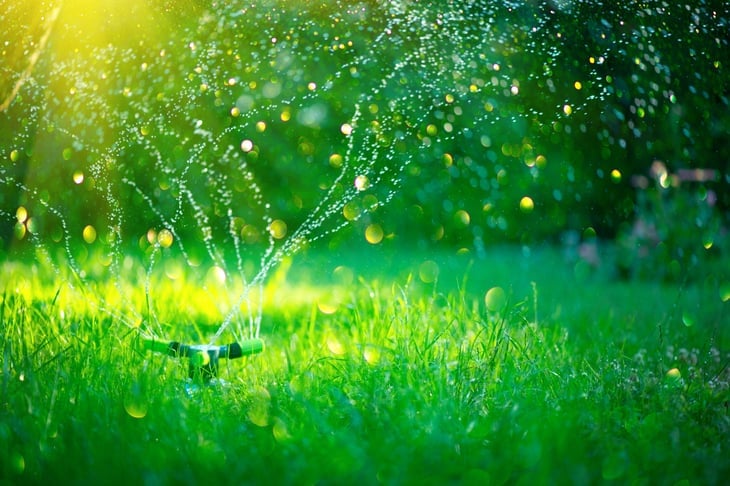
On average, traditional turf costs less to install than its eco-friendly substitutes but is more expensive in the long term due to relatively high lawn care costs.
But some options can actually be cheaper than turf.
Clover seeds cost about $1 per 1,000 square feet, while no-mow grasses like centipede and buffalograss seeds cost between $1 to $7 per 1,000 square feet. By comparison, turfgrass seeds for Bermuda, Zoysia, and ryegrass cost between $4 and $40 per 1,000 square feet.
Eco-friendly alternatives like ornamental grasses, moss, and more complex designs come with higher prices. For example, a gallon pot of fountain grass costs about $25. Rock gardens cost about $460 and $1,000 for materials and installation and another $600 to $700 for a professional landscape design.
However, you recover your initial investment pretty quickly.
For starters, you save $72 to $210 a month in mowing costs (with bi-weekly mowing) just by eliminating turf trimming. This means $576 to $1,680 per year with an eight-month mowing season. Not to mention savings with irrigation, dethatching, fertilization, aeration, and overseeding.
How to Start Your Eco-Friendly Lawn
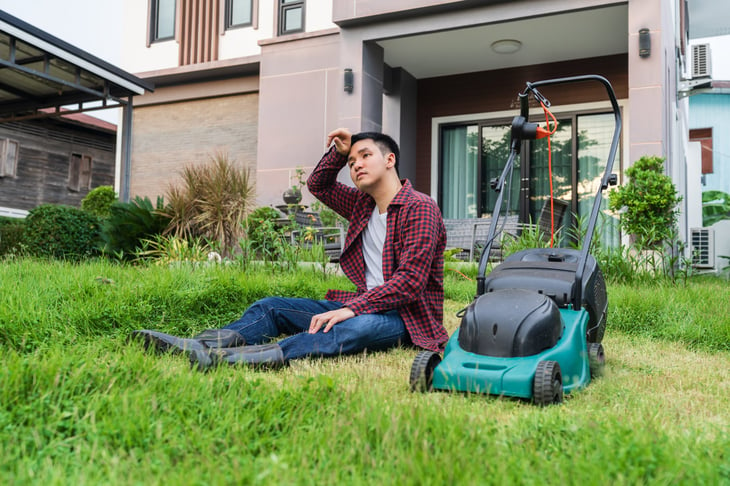
It’s not always a build-from-scratch project. For example, you can simply seed wildflowers on your turf, stop mowing, and make a gradual transition toward a meadow.
Another option is to downsize the lawn but still keep some turf. In this case, you’ll create eco-friendly areas like a clover corner, a rain garden down the slope, or garden beds with wildflowers around the yard. Switch to an eco-friendly lawn care routine for the remaining turf, and you’ve started turning your lawn green.
Of course, you also can remove all the turfgrass and redesign an eco-friendly garden from bare ground. A professional landscape designer is typically needed in this case.
Any option you choose is an important step toward a healthier Earth, a sustainable lawn, and a safer space for your family.





Add a Comment
Our Policy: We welcome relevant and respectful comments in order to foster healthy and informative discussions. All other comments may be removed. Comments with links are automatically held for moderation.